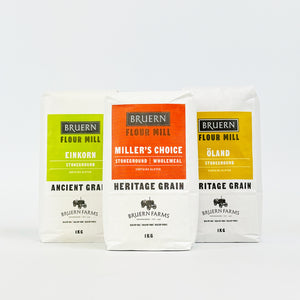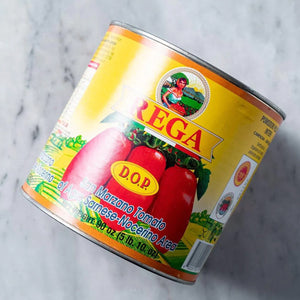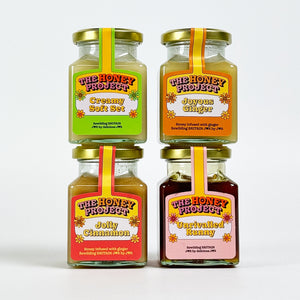
Vital Wheat Gluten. What is it? Is it good for you? And how to make Seitan, a protein-packed Vegan staple.
Whether you’re vegetarian, vegan, or have ever spent any time scrolling through social media, chances are you have come across one of the thousands of viral posts trending on the topic of the Vegan meat alternative, Seitan.
But what is it? How do you make it? Is it good for you and most importantly, what does it taste like?
The Ratton Pantry team have not only sourced and can supply the main ingredients in conveniently sized packs for the individual home chef, but we have experimented with this innovative and versatile ingredient and have a few tips and tricks to share with you!
Let’s start with the basics…
What is Vital Wheat Gluten?
So quite literally the ‘vital’ ingredient to make seitan, is Vital Wheat Gluten.
Vital Wheat Gluten might look similar to flour, but it is slightly different in that it is a form of almost pure gluten, the stretchy protein found in wheat, rye, barley, and other grains. It is made by hydrating the wheat flour to activate the gluten and then processed to extract everything from it. This is achieved by washing/rinsing the dough. As gluten is water-insoluble, the starch in the dough will dissolve, whereas the gluten will stay behind as a solid. The final product is then dried and ground back into a powder. It packs a powerful protein punch, even in small amounts, making it a great alternative for those who choose to exclude meat from their diets.
You can make Wheat Gluten (as it’s more commonly known) at home, but it’s a laborious process that leaves a lot of unnecessary by-products. Unfortunately, vital wheat gluten can also be tricky to find (usually in health food stores) and pricey.
Luckily you can purchase handy, ready to go bags of wheat gluten from us at Ratton Pantry by taking advantage of our in-house decanting service. Or for those who may be more experienced, regular or even trade consumers we can cater for larger orders by providing 25kg sacks of this super-powered stuff!
Is Vital Wheat Gluten the same as Gluten Flour?
Yes, vital wheat gluten and gluten flour are essentially the same things. The names are used interchangeably. But do remember that you cannot completely replace vital wheat flour in place of regular flour in any baking recipe. As the vital wheat flour is mainly gluten, if you use this flour for baking without the regular flour then your end product will be all mushy and shapeless.
What is Vital Wheat Gluten used for?
It is used as a substitute for meat and always appears as an essential ingredient in most Asian cuisines. Vital wheat gluten is available in powder form, which is usually mixed with other spices and water to form the dough. When you are using the vital wheat gluten dough for steaming, baking, boiling, or cooking, it becomes very chewy (something similar to the meat-like texture). This is the reason behind seitan being the most popular meat substitute food choice in the vegetarian community.

Is Vital Wheat Gluten healthy?

Why is it called Seitan?
What does Seitan taste like?
How do I cook Seitan?
Seitan is easy to cut in chunks and add to stir-fries, stews, and casseroles. Tossed in a marinade with some oil in it, seitan can be grilled on a skewer or roasted in a hot oven to crisp the edges.

Why is my Seitan so chewy?

Ingredients
- 1 tbsp oil
- 1 large white onion, diced
- 2 cloves garlic, minced
- 1/3 tsp salt
- 1 tsp paprika
- 2 tbsp tomato puree
- 200ml vegetable stock
- 1 tbsp soy sauce (optional; omit for soy-free)
- 34g chickpea flour
- 2 tbsp nutritional yeast
- 193g vital wheat gluten
Instructions
- Heat the olive oil in a skillet over medium heat. Add the onion and salt, and cook for a few minutes, stirring frequently, until onion is softened slightly.
- Reduce the heat to medium-low and add the garlic and stir. Cook for 2-3 minutes, until the garlic is softened and fragrant. Add the sweet paprika and other spices to the pan, stir, and cook for 60 seconds or until fragrant. Remove from the heat.
- Use a spatula to transfer the onion-garlic mixture, including oil, to a blender or food processor. Add the tomato puree, vegetable stock,, soy sauce (if using), chickpea flour and nutritional yeast. Blend until smooth. (Raw chickpea flour tastes terrible so we don't recommend sampling this!).
- Transfer the mixture to a mixing bowl and add the vital wheat gluten, then stir until evenly combined. Once stirred, use your hands to knead the mixture until it becomes more firm and a little bit springy, about 2 minutes. The dough will be quite loose and moist, so this won't feel similar to kneading bread.
- Prepare boiling water and a steamer. Be sure to add plenty of water. Tear or cut the dough into small, bite sized pieces (remember, this will expand a lot during the steaming process!).
- Once the water is boiling, steam the dough for 10-12 minutes, carefully flipping it over halfway through using tongs.
- Now let the fun begin! You’ll be left with a slightly spiced, ready to go, vegan meat alternative ready to add to your favourite dishes. You can substitute this for any recipe that would usually require meat and treat it the same way you would use cooked chicken.
-
Let any leftover seitan cool to room temperature, then place it in an airtight container in the refrigerator where it will keep for about a week.
-
Feel free to experiment with different sizes and shapes of seitan dough, for example, for a vegan-friendly loaf you can roll the un-steamed dough into a big sausage shape and wrap in tin foil. This can be steamed for an hour and then sliced, to replace a joint of meat for a roast dinner, or luncheon meat for sandwiches throughout the week! For best results, slice the seitan as needed for recipes.
And there you have it!
Please do feel free to get in touch with us with any further questions regarding this, as one of our most popular products! We'll do our best to help. Also please share any recipes or success stories you have with using Vital Wheat Gluten as an ingredient. We love hearing how you are all using this versatile secret ingredient!





Comments
Leave a comment